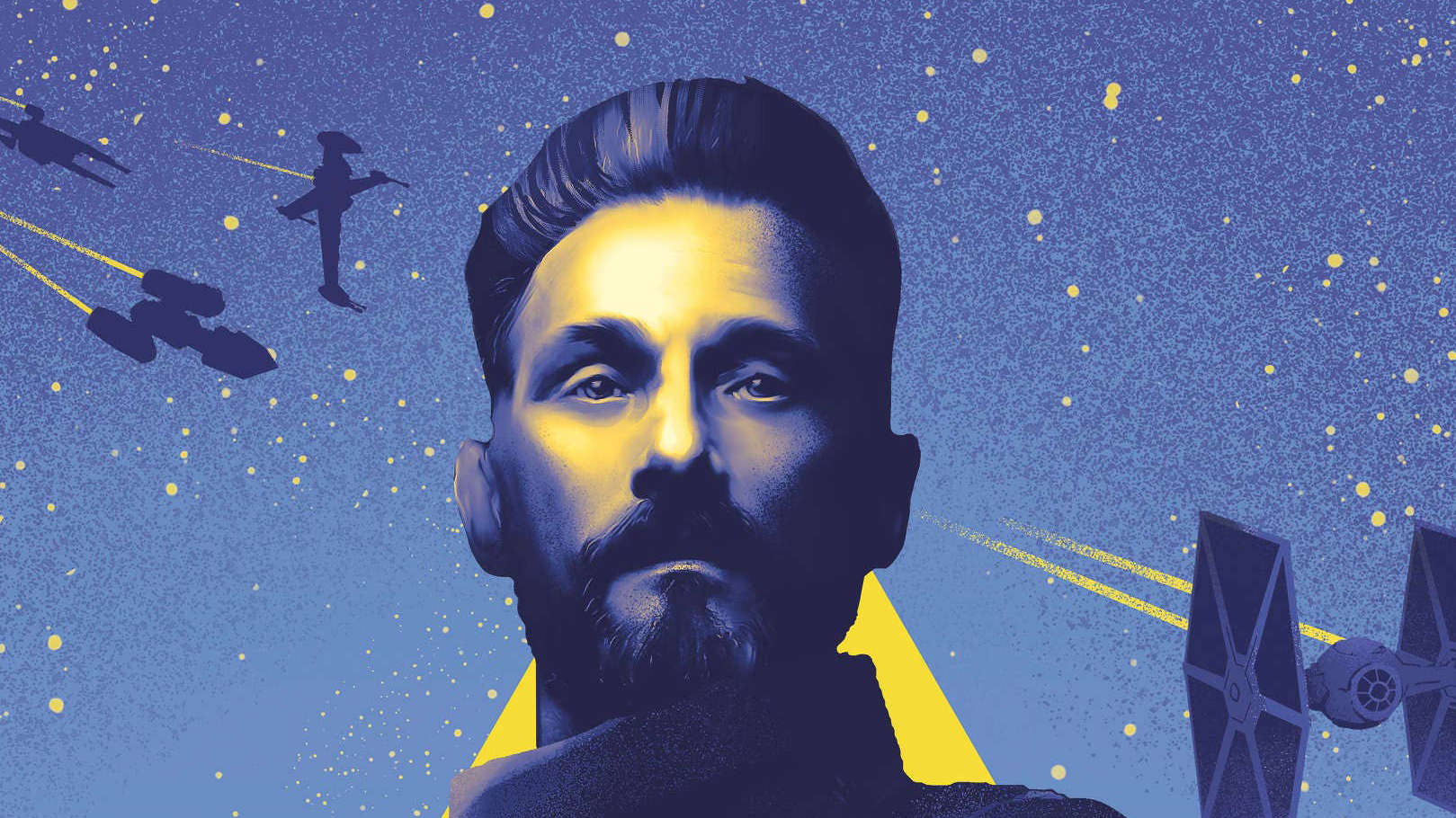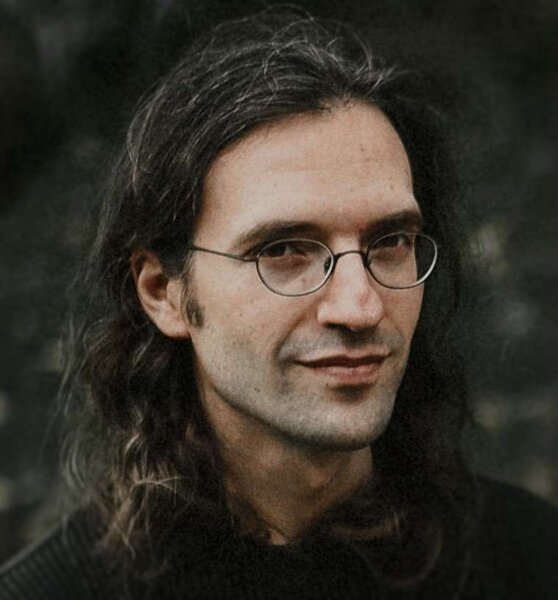Create a free profile to get unlimited access to exclusive videos, sweepstakes, and more!
Star Wars: Victory’s Price author Alexander Freed on ending Alphabet Squadron as a true trilogy

The Star Wars galaxy tends to depict space flight through a fantasy lens. Brash pilots hop in and out of ships like they’re hoping on and off horses, and there’s very little danger of the science-fiction variety. Within the books of the franchise, however, things aren’t so simple. The now completed Star Wars: Alphabet Squadron trilogy by Alexander Freed is a perfect example.
It’s a rare instance of an entire Star Wars book trilogy that has a starring roster of new characters, with very few legacy characters in sight (in the new canon, at least). The trilogy (which includes the books Alphabet Squadron and Shadow Fall) brought things to an end on March 2, 2021, in a book called Star Wars: Victory’s Price: An Alphabet Squadron Novel. The book, which is set in the time period between Return of the Jedi and The Force Awakens, delves once more into the ethical quandaries of Imperial-turned-Rebel Yrica Quell and her rag-tag squadron of pilots. Hopping in an X-Wing and blowing something up continues to be much more complicated (and frightening) than it sounds.
SYFY WIRE caught up with Alexander Freed to talk about how he planned out the trilogy, how he worked with the Star Wars Story Group, how he managed to make Star Wars dogfights work in a prose format, and more.
Was this always intended to be a trilogy?
Yes. One of the first things that I asked my editor was how much of a trilogy do we want this thing to be? Are we actually doing a continuing storyline here? Or do you want three standalone novels that are building on one another? I'm terribly grateful that her reaction was, “We don't do a lot of preplanned trilogies, so go for it. Make this as much of a continuing story as feels right to you." That was hugely exciting.
Were there things that you'd always planned to be in the third book that changed for you while writing?
I would say no. Everything that I thought was concrete going into the third book remained as it had been planned. There were some important elements that I had a notion of where they might go, but hadn't firmly committed to, and some of those did shift. But the spine of the story was pretty much what had been planned, and that's partly just my approach to writing. I find it very difficult to write a story, unless I have a very clear roadmap of where it's going all the way through. I think of it as everything I'm putting in there should be building towards something specific at the end. And I think by the end of book two, I had mentally locked myself into a certain set of things happening in book three, and I couldn't have pulled myself out of that if I wanted to.
Was there a point where you wished that you could go back to the previous books and set something up differently, or seeded something that you needed here?
If I needed a plot point or a subplot in book three, and I didn't feel like I had anything obvious to build that from, I could then go back to everything that I put in the first two books and look for something that had been a throwaway moment in book one, or intended as just a bit of world-building in book two, and go, "Oh, I'm going to use that as the seed for this subplot in book three, it's going to feel like a more natural progression than starting from scratch."
So there were some surprises for you, but there were all based in what you already had and could play with.
Absolutely, and I had a sense of what that toy box looked like. I knew that I needed to get my characters from point A to point B, but I didn't know everything that was going to be in between those points. And figuring out what that looked like and what elements I could pull in from earlier books, that was sort of the creative joy of book three.
This trilogy has many references to other Star Wars canon, such as Vanguard Squadron [from the video game Star Wars: Squadrons]. Where did those references originate from? Do you decide to put them in, or do they come from the Story Group?
It's really a mix. Some of it comes from Story Group. When they see the outline, or even when they've seen the final manuscript, someone in Story Group may see a moment and go, "Oh, this is a perfect point to reference this thing happening, and this other thing that we've got going on. If it feels like you can get this in there, if it's not going to damage anything else, we'd love to see something here." And they're very good about not being pushy about it, but sort of calling out opportunities for interconnectivity.
In some cases I might throw in a reference and then, Story Group or someone from one of the other projects would call it out, and say like, "Hey, I'm glad you're trying, but this actually doesn't make any sense with the context of what we're doing, so let's cut that one." But more often it would be, "Oh, great." Or, "Hey, it'd be even better if we nudged that just a little bit to make it perfectly interconnect.”
How did you manage to transition the action of Star Wars dogfights to the printed page?
To my mind, that was my biggest known challenge going into it. Dogfighting in a Star Wars film is very fast. It's visceral. It's exciting, lots of intercutting, lots of jumping from one cockpit to outside the cockpit to another cockpit, and none of these things are things that books do particularly well. Prose does not handle that kind of action. So I had to figure out an approach that was going to work on the page. A lot of that was looking at what I could do in prose that couldn't be done on the screen.
What does it physically feel like to be inside a cockpit? What are the gravitational stresses on someone as they're maneuvering? When you see one of those panels explode in sparks, how hot does that get? How uncomfortable does that get? What is it like working in the harness and trying to see behind you and communicating with your droid and doing all of that simultaneously? And that gave me a window into all of it, the experiential window, and the emotional window of what does it feel like to be doing this? What are the stakes? And that felt like they could substitute for what I would lose by not being this real-time cinematic experience.
You also give the pilots a therapist, in the form of a re-programmed Doctor Ball [IT-O Interrogator droid].
Our lead Quell, she's deceiving herself about a lot, and having a character in there who is going to help peel back those layers and reveal these characters to themselves, felt like it would be really important. I went through the mental catalog of, okay, so what does this therapist character actually look like? And really, the funniest answer seemed to be a torture droid. The funniest and also appropriate to a certain extent, right? A torture droid, surely, has to know something about human psychology to do his job really well. So it was a mix of black humor and, "Oh, no, this actually makes some sense and I can get an interesting character out of this.” One of the first things that I decided about that character too, was okay, this is ridiculous. I have to play it straight. He could not be a silly character.
Can you speak to the experience of weaving in known characters like Hera Syndulla and Admiral Ackbar?
The novels could not have had the characters that they did without a Hera-type character as a counterpoint. To put it sort of tritely, she is very Star Wars-y, and not just because she is a legacy character, not just because she has such a large role in Rebels, but because her personality, her drive really deeply tied back to the core themes of Star Wars. I got to write a version of her that was slightly different than the one that we know, and got to evolve that character, which is always delicate. Ackbar's role in Book Three is a pretty small one. The trick about Ackbar, though, is so much of Ackbar is the voice, so much of it is just the delivery of those lines, not even the lines themselves. You could take those lines and give them to someone else, and you wouldn't necessarily recognize them as Ackbar on a character level.
Figuring out how to capture that in text was a little bit of a challenge. And to a certain degree, I'd just, I had to hope that readers would be doing the Ackbar voice in their own heads.
Star Wars: Victory’s Price: An Alphabet Squadron Novel is out right now. You can’t repel firepower of this magnitude.



























